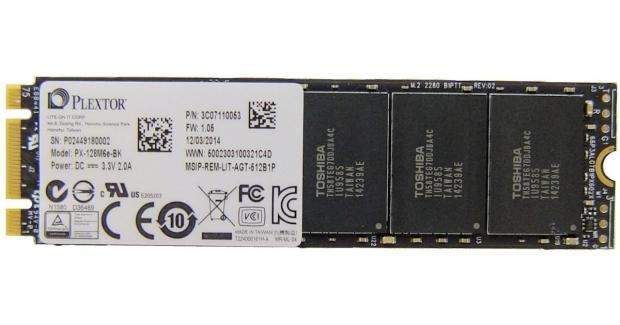The Bottom Line
Introduction
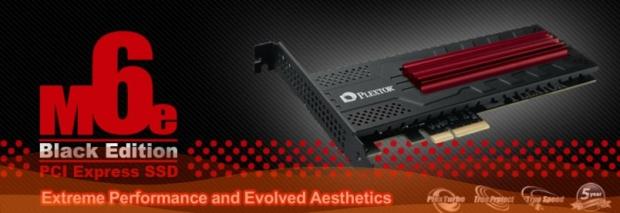
After testing Plextor's new M6e Black Edition 512GB and 256GB products, we've found that the excitement from this series wears off as we move down the product line. All three capacities read sequential data back at the same rate, 770 MB/s, and the sequential write performance trails off as the capacity shrinks. The 512GB writes sequential data at 625 MB/s, but that number drops to 580 MB/s on the 256GB model. The M6e Black Edition 128GB that we're testing today sinks sequential write speeds to just 335 MB/s, which is lower than all of the premium SATA 6GB/s products on the market today.
Plextor is targeting gamers with the new PCIe 2.0 x2 M.2 interface SSD, but we have to question why a gamer would want such a small premium priced SSD in the first place. It's not a secret that games have grown in recent years. Digital delivery systems such as Steam and Origin have unbound games from the limits of optical media. These days, it's common for game patches to top 5GB, with full installations of some games taking over 40GB of storage capacity.
The only way for a modern gamer to survive with a 128GB SSD is to pair the drive with another storage solution to hold large game files. In my home, that means an iSCSI bond to a NAS over a high-speed Ethernet connection, with a cache SSD sitting in front of several mechanical disk drives. For most of us, a dual drive solution means a SSD for the operating system, and a mechanical HDD to hold game files as the D: drive.
We wonder if a premium priced PCIe SSD with only 128GB of capacity even makes sense when it fails to match the performance of a budget SSD on the market today, much less a SandForce-based drive released three years ago that you most likely already own.
Specifications, Pricing, and Availability
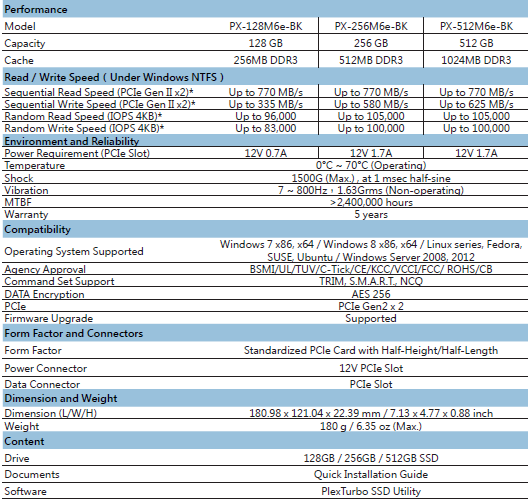
Today we're focusing on the M6e Black Edition 128GB model, but we will go over the other model specifications here as well. The fastest in Plextor's trio of new products is the 512GB capacity, followed by the 256GB capacity, and finally the 128GB capacity we're testing today. All three drives use Toshiba's A19 (second generation 19nm MLC flash), and all three drives use the same number of flash packages. The variable is the number of flash die per package. The more die, the higher the level of interleaving, which is the method that makes SSDs faster than single die speed.
All three M6e Black Edition SSDs read sequential data back at 770 MB/s. The sequential write speeds are staggered based on the amount of interleaving. The 512GB model writes sequential data at 625 MB/s, the 256Gb model at 580 MB/s, and the 128GB model we're testing today writes at 335 MB/s. The two larger drives write sequential data faster than is possible with SATA 6Gb/s, but the smallest capacity model falls within the range of SATA 6Gb/s products. That performance doesn't go over well since there are SATA 6Gb/s products on the market that write data faster than the M6e Black Edition 128GB, and sell at a lower price.
Newegg just listed the M6e Black Edition prices this evening, and this is the first review in the trio that I have pricing information available. The 512GB model will launch at $529.99, the 256GB model for $299.99, and the 128GB model we're testing today will launch for $199.99. Newegg estimates these products will ship February 12, 2015, and you can preorder the products as of today.
If you land on Newegg's Black Edition product page, you will notice an error in the warranty terms. Newegg shows a three-year warranty, but Plextor covers this series with a five-year warranty.
The difference between the M6e sold last year and the new Black Edition is a firmware upgrade; the M6e stopped at FW 1.04, and the Black Edition ships with 1.05. The Black Edition also gets an improved PCB on the adapter card that allows users to supply power through a SATA power plug, and also attach the computer case's HDD activity LED to a new connector.
The largest improvement on the new Black Edition is the heat sink that helps dissipate heat from the SSD. There is a thermal transfer material pad between the SSD and the heat sink, which effectively increases the surface area cooled by the system fans inside of the computer case. Last but not least, the M6e Black Edition introduces PlexTurbo 2.0 to the M6e product family. The software works on updated M6e products as well, but is just coming to the market with the new models.
Plextor M6e Black Edition 128GB PCIe SSD

The black edition theme carries over to all aspects of this product, including the retail packaging.
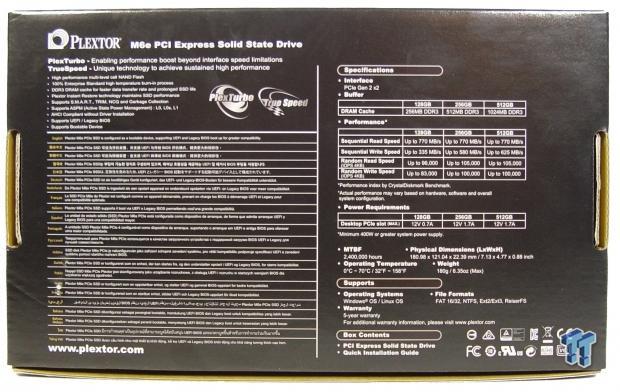
Plextor lists the specifications for all three capacities on the back of the package, and also includes a list of features.
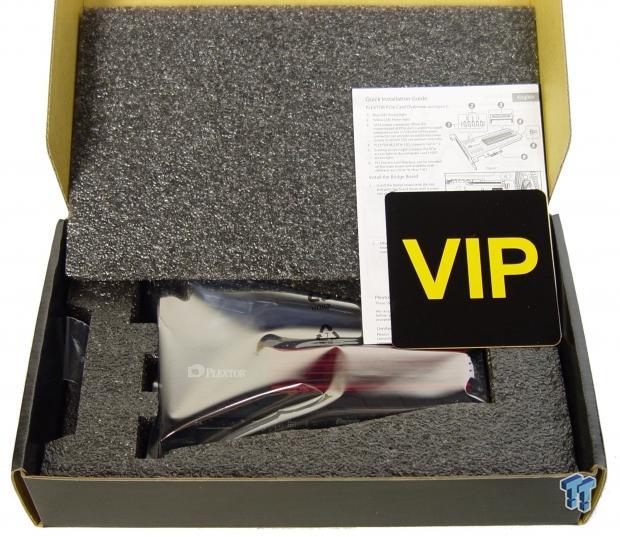
Inside, we found the card tucked away with dense foam to keep the card secure for shipping.
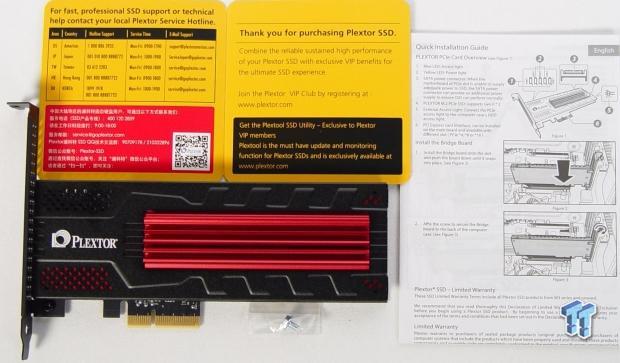
Inside of the packaging, you will find a paper installation manual, a card with support contact numbers, the M6e Black Edition PCIe SSD, and a screw for installing the card in your PC.
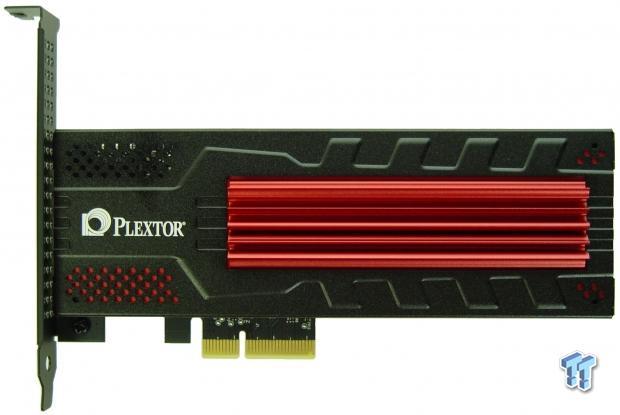
The M6e Black Edition looks quite a bit different than the original M6e Plextor released last year; the new heat sink sets the tone right away. The black PCB is a nice touch as well. Together, the black and red combination will match a large number of motherboards and video cards on the market. All of the extra bling is actually functional as well.
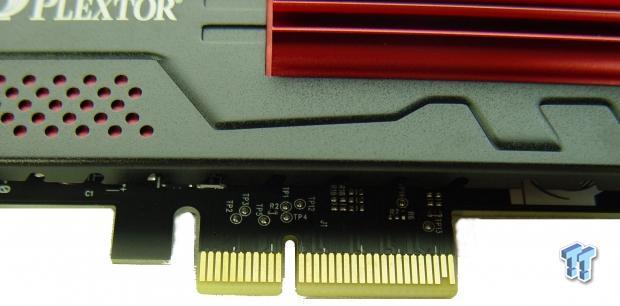
These gold fingers bring the power and data into the SSD, and allow the M6e Black Edition to run on the PCIe bus.

Air will flow past the heat sink on the card and out of the back plate while exiting your system.
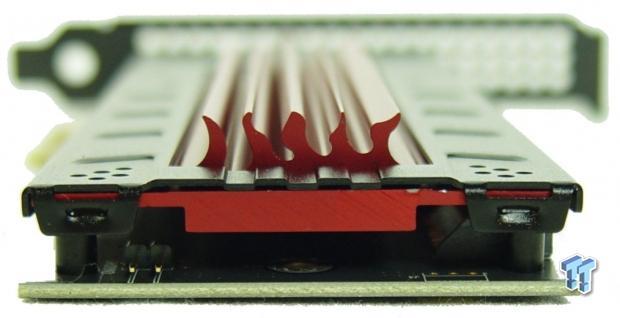
Plextor put a lot of thought into this design, and really went the extra mile. Here we see some of the detail put into the heat sink.

Thermal transfer material passes heat from the M.2 card to the heat sink.
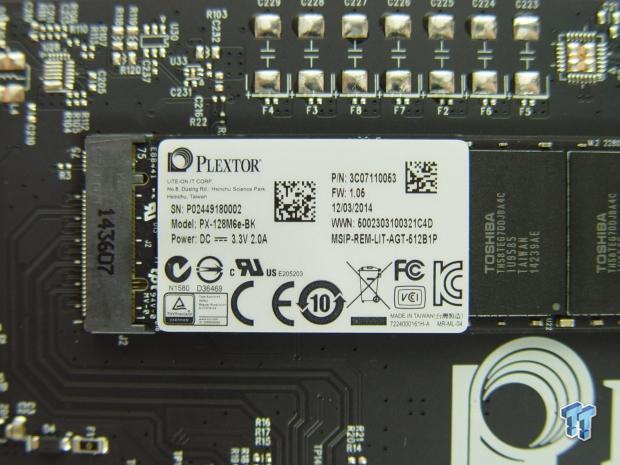
With the lid removed, we see the inner workings of this product. Plextor uses a M.2 2280 SSD, and a new, black colored PCB adapter.
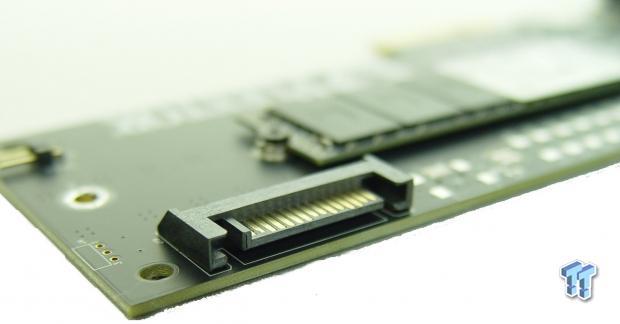
You can supply additional power through a SATA power port on the card. We didn't need the extra power for our system, but if you have several PCIe devices installed in your system, then you will want to use the auxiliary power.
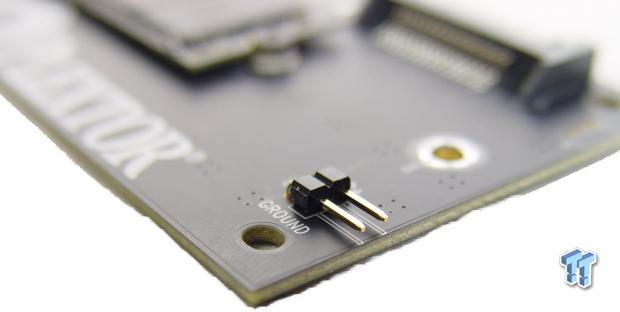
The card also has pins for connecting LEDs to show SSD activity. The easiest way to use this is to unplug the HDD activity LED lead from the motherboard, and plug it directly into the M6e Black Edition.
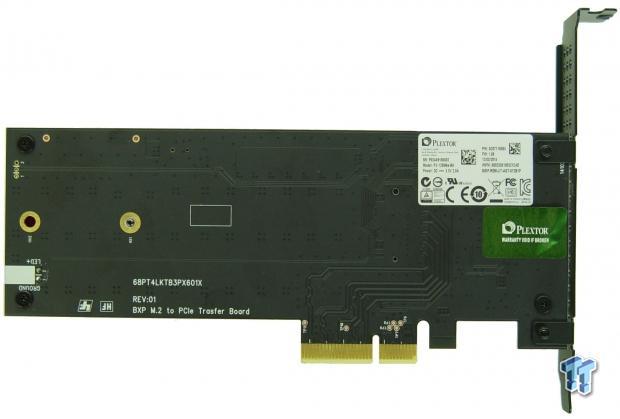
Here is a look at the back of the card. This is what most of us will actually see in a system, unless your system inverts the motherboard.

You will see this design a lot in 2015. The actual M.2 SSD is a 2280 design, which means 22mm wide and 80mm long.
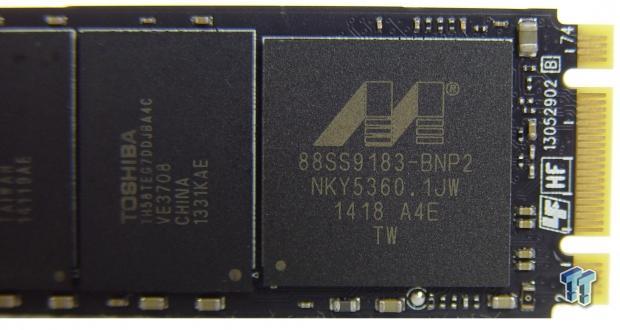
The controller is a Marvell 88SS9183. This is Marvell's first generation PCIe to flash controller, and it uses PCIe 2.0 x2 (two lanes).
Test System Setup and Initial Performance
Desktop Test System
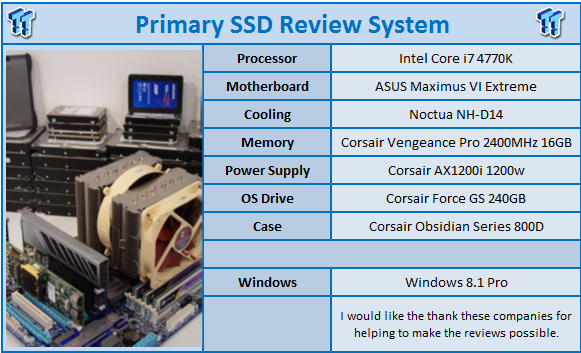
Lenovo T440 - Notebook Power Testing with DEVSLP and Windows 8.1 Pro
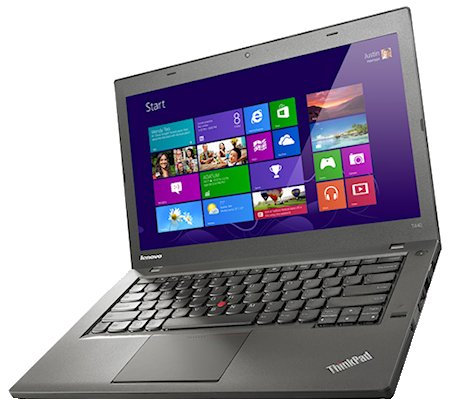
Nearly all of the performance tests run on the desktop system, but we use a Lenovo T440 to run the power tests. The T440 is the latest addition to our client SSD test lab, and allows us to test the notebook battery life offered by a SSD with advanced features like DEVSLP enabled.
Initial Performance Evaluation - 4-Corner and then Some Tests
Sequential Read
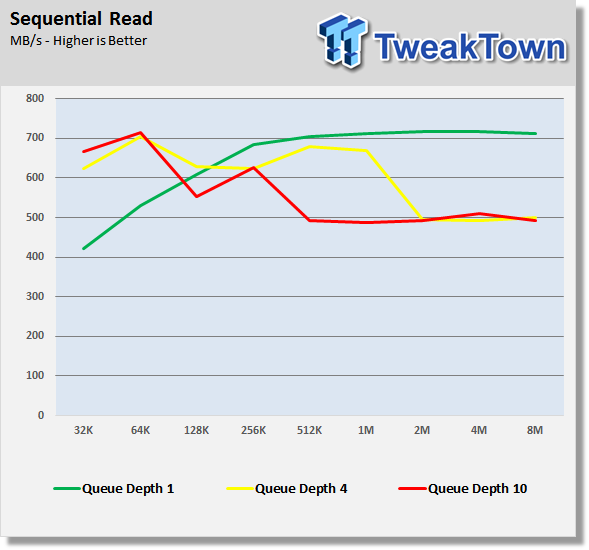
Sequential Write
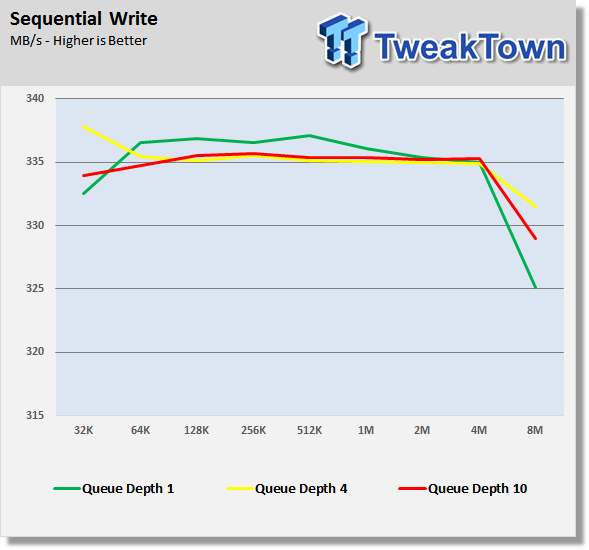
Sequential 80% Read 20% Write
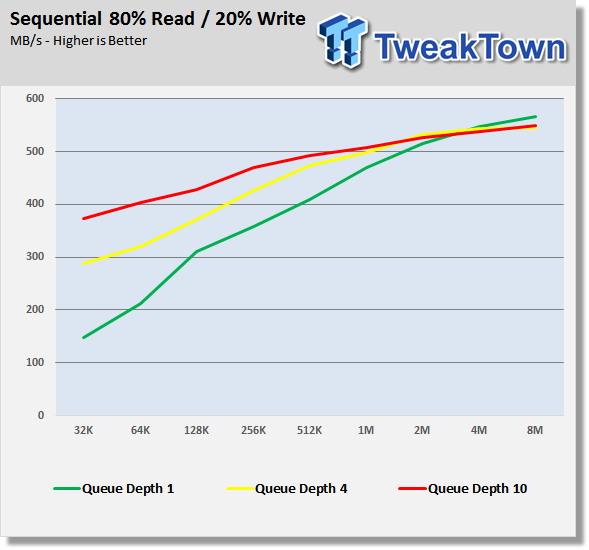
The sequential read test shows QD1 faring better than QD4 and QD10, thanks to the drive's aggressive wear leveling and garbage collection schemes. Aside from that abnormality, the rest of the sequential charts fall in line with our expectations. With sequential data, we had reads over 700 MB/s, and writes under 340 MB/s.
Random Read
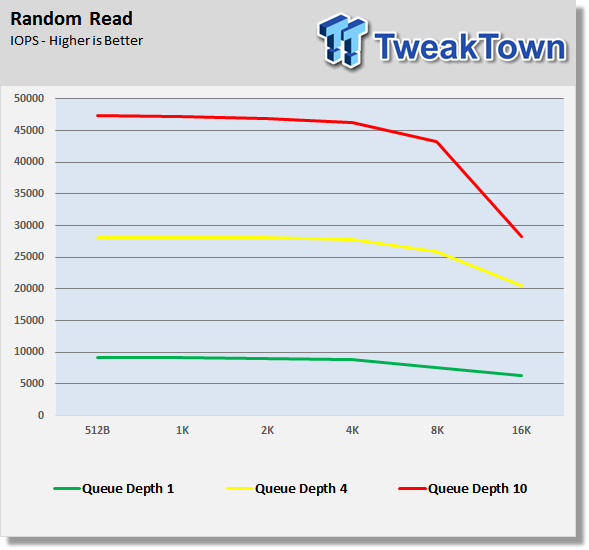
Random Write
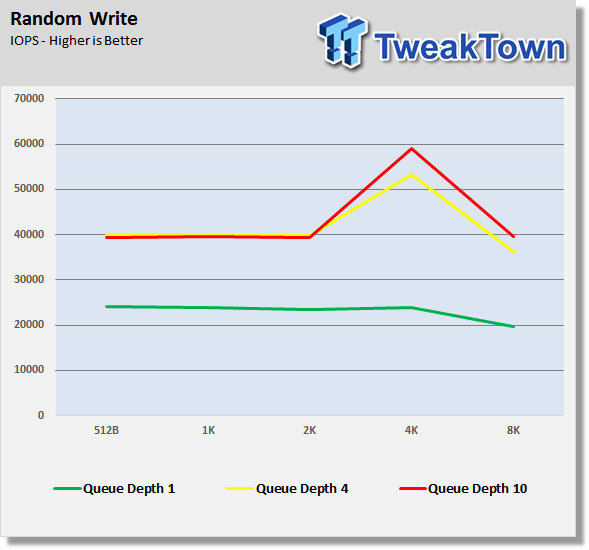
Random 80% Read 20% Write
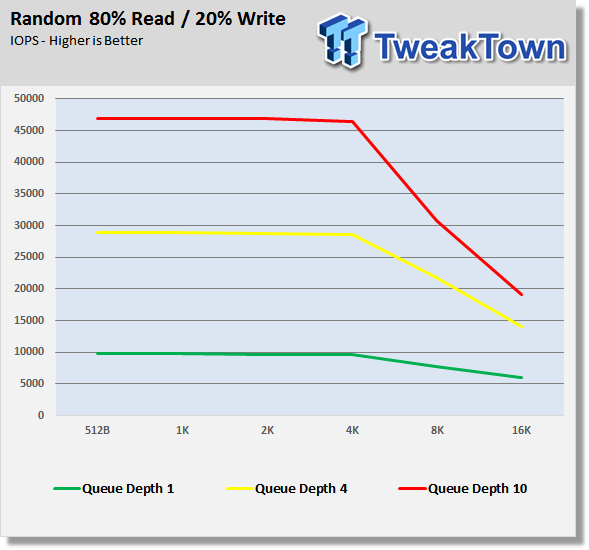
The random performance was also in line with our expectations. The M6e Black Edition 128GB gets really close to 10K random read IOPS at QD1, but doesn't manage to break the plane. The performance scales really well as the load increases. On random writes, the difference between QD4 and QD10 is quite small until we get to 4K and 8K loads.
Benchmarks - Sequential Performance
HD Tune Pro - Sequential Performance
Version and / or Patch Used: 5.50
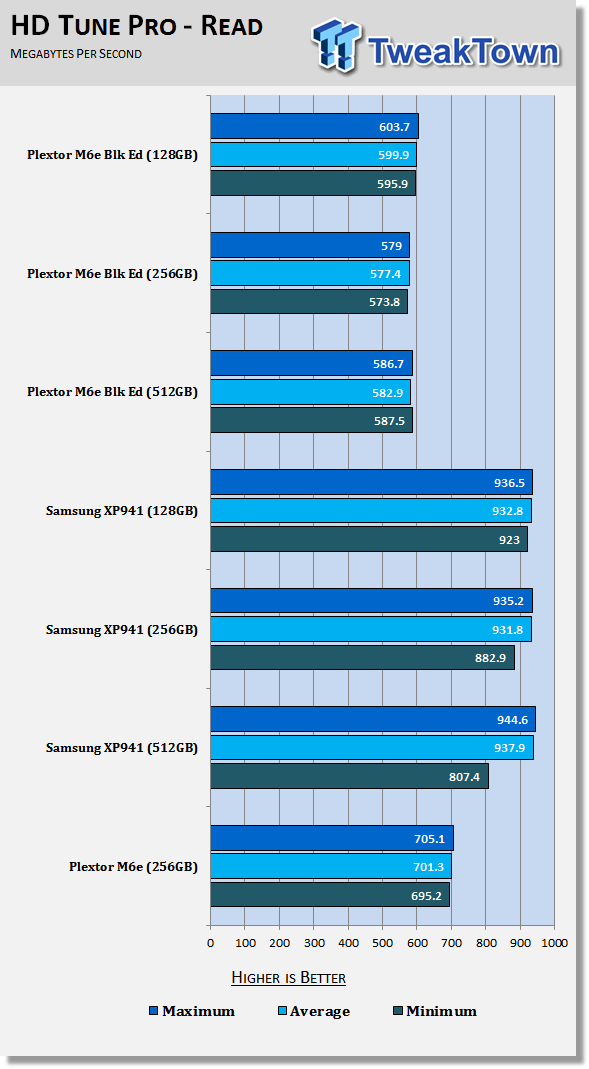
There isn't a lot of variation between the three M6e Black Edition products in the sequential write tests with 64KB data. However, the one thing you will notice is that the original M6e with the first release firmware is a bit faster than the three Black Edition products. Plextor traded some sequential performance for better random performance with later firmware releases.
Plextor's only competitor in the native PCIe M.2 form factor at this time comes from Samsung. Samsung released the XP941 as a product for system integrators to use, but some resellers like RamCity managed to secure a steady supply of the product. The XP941 uses PCIe 2.0 x4, which is twice the number of lanes of the M6e products.
As you can see, the Samsung XP941 drives read sequential data back faster than the M6e Black Edition drives, and the gap is quite large even though the prices are very close to each other in dollars per gigabyte. The XP941 products do not ship with the adapter or the heat sink bling that the Black Edition ships with though.
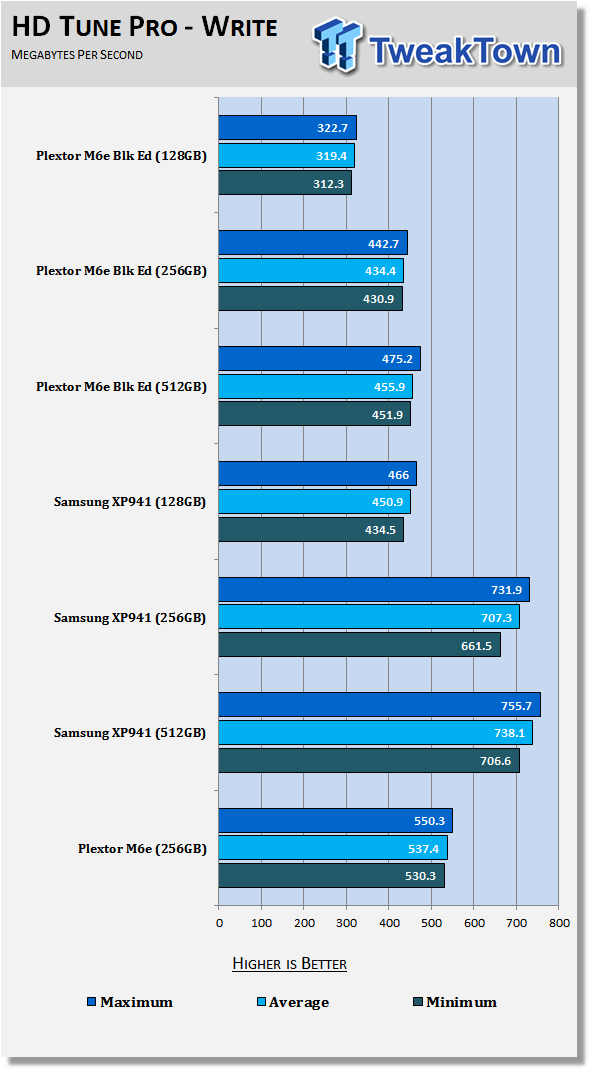
For the product we're testing today, sequential write performance is the Achilles Heel. After you spend ten hours downloading a new game, you want to install it as fast as possible. Sadly, the 128GB Black Edition will not give you the speed you are looking for out of a shiny new PCIe SSD.
HD Tach - Sequential Write Performance after Random Writes
Version and / or Patch Used: 3.0.4.0
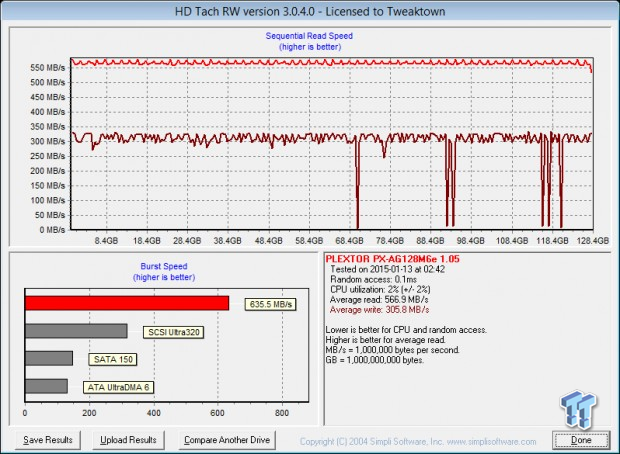
After a reasonable number of sequential and random writes to the drive, we ran HD Tach to measure sequential performance at 128KB. The read performance remained fairly consistent, but the write performance dropped in several areas. The sequential write performance fell below 25 MB/s six different times. We didn't have this issue with the two larger models in the Black Edition product family.
Benchmarks - Anvil Storage Utilities
Anvil Storage Utilities
Version and / or Patch Used: RC6
So, what is Anvil Storage Utilities? Anvil Storage Utilities is a storage benchmark for SSDs and HDDs where you can check and monitor your performance. The Standard Storage Benchmark performs a series of tests; you can run a full test, or just the read or the write test, or you can run a single test, i.e. 4k QD16.
Anvil Storage Utilities is not officially available yet, but we've been playing with the beta for several months now. The author, Anvil, has been updating the software steadily on several international forums, and is adding new features every couple of months.
We can use Anvil several different ways to show different aspects for each drive. We've chosen to use this software to show the performance of a drive with two different data sets. The first is with compressible data, and the second data set is incompressible data. Several users have requested this data in our SSD reviews.
0-Fill Compressible Data
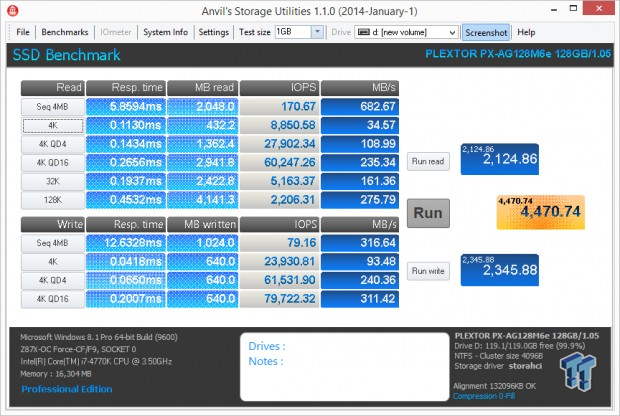
Incompressible Data
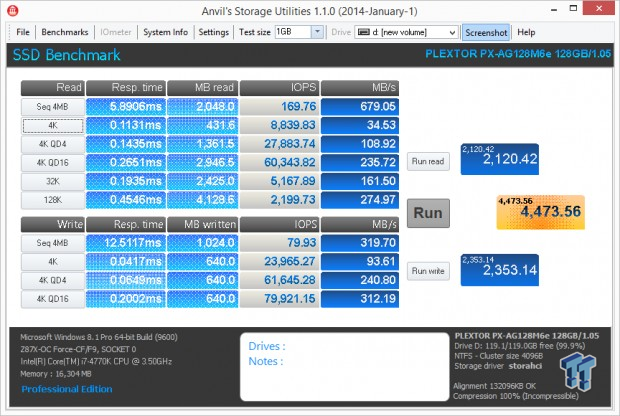
Compressible and incompressible data flow at nearly the same rate on the M6e Black Edition.
Low Queue Depth Read IOPS

Previously, we stated that Plextor traded some sequential performance for increased random performance through firmware updates. Here we see that even the 128GB Black Edition is faster than the original 256GB M6e at QD1 random reads. Aside from the original M6e, the 128GB Black Edition gave us the slowest random read results on the chart.
High Queue Depth Read IOPS
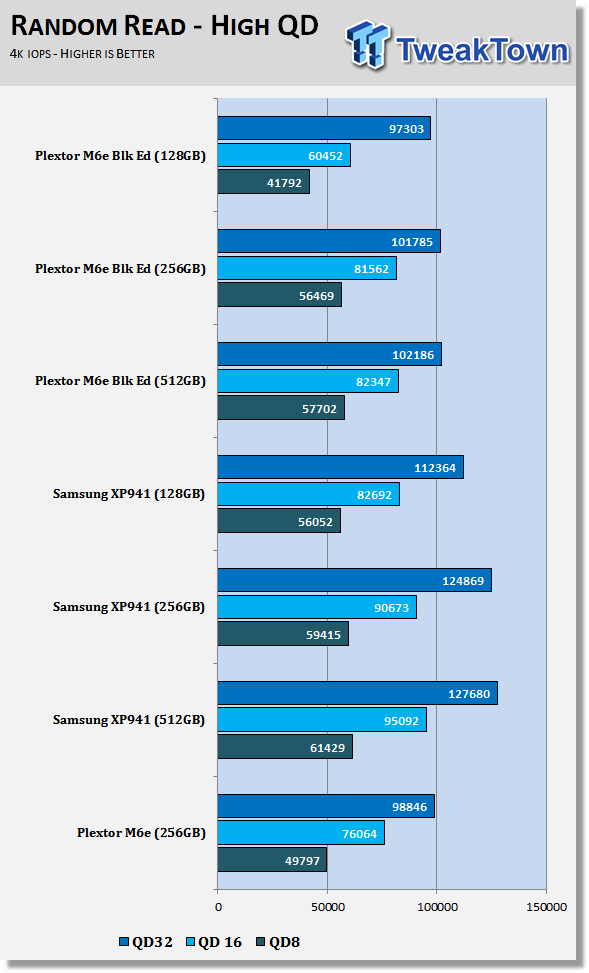
Moving higher into the queue depth scale, the M6e Black Edition does scale well as the load increases. The high queue depth random read performance is right around the same mark we are able to achieve on premium SATA 6Gb/s products like the Samsung 850 Pro and SanDisk Extreme PRO.
Low Queue Depth Write IOPS
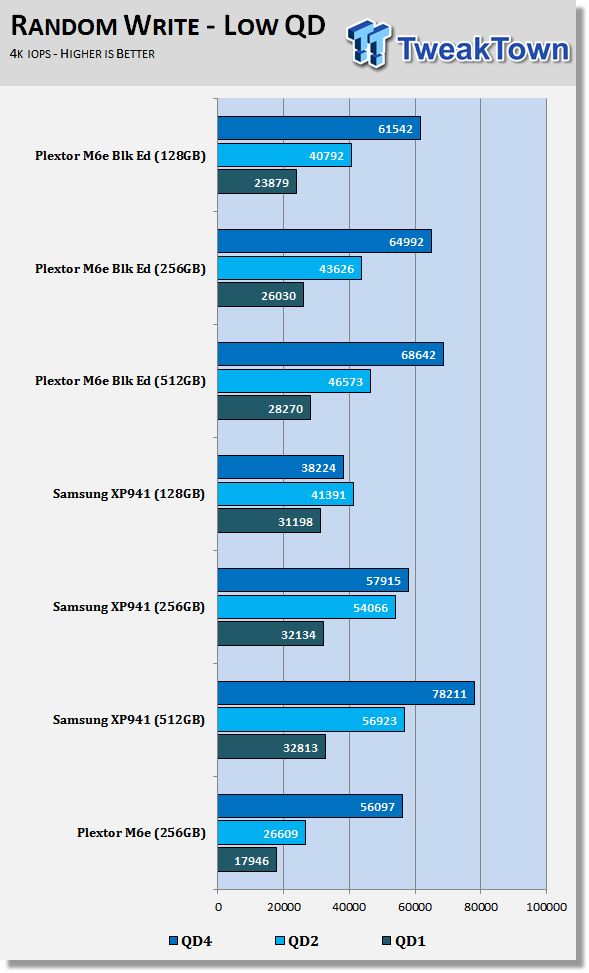
The 128GB M6e Black Edition is slower than the 128GB XP941 at QD1 random writes, but closes the gap by QD1. By QD4, the Plextor is actually faster than an equal sized Samsung SSD.
High Queue Depth Write IOPS
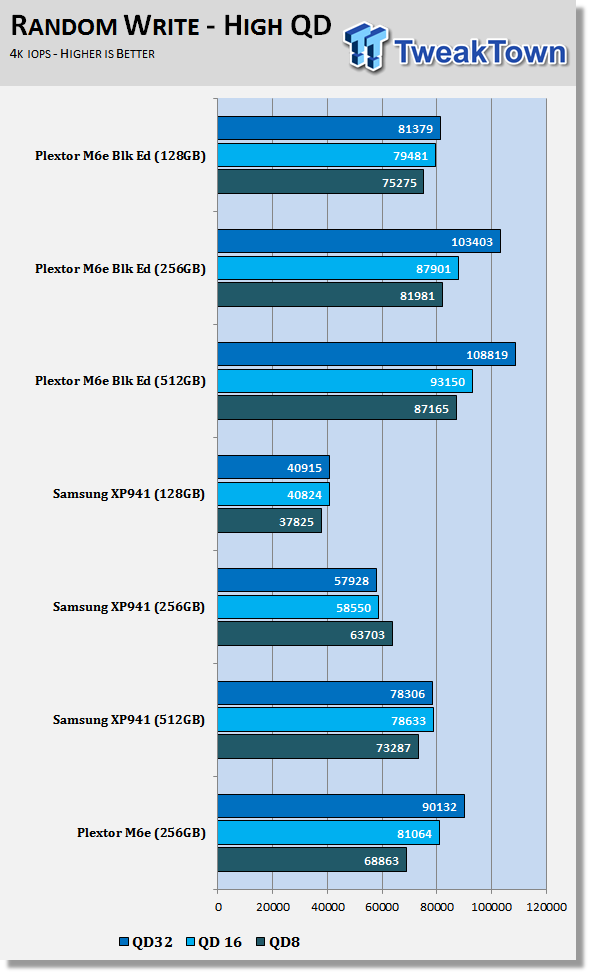
In the high queue depth random write range, the Plextor drives tower over the Samsung SSDs. Sadly, most normal PC users will never get into the high queue depth range because SSDs are so fast that commands don't get a chance to stack up this high while waiting to be executed.
Benchmarks - Mixed Read / Write Workloads
Sequential Mixed Read / Write Workloads
In this series of tests, we measure mixed workload performance. We start with 100% read, and then add data writes to the mix in 10% increments until we get to 100% writes. We believe this will be the next major area SSD manufacturers will address, after performance consistency.
Sequential Mixed Workload Bandwidth
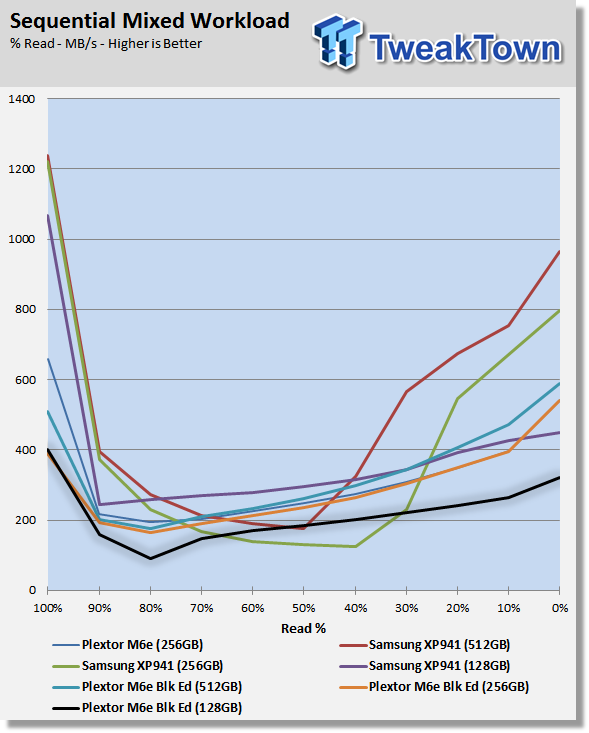
None of the drives on this chart are perform well at sequential mixed workloads with the drives in full-on sequential steady state. This is a problem that carries over to SATA based products as well. We think most of the controllers in the first generation M.2 PCIe class of products are based closely on SATA. Both use the AHCI command set, which is bidirectional, but SATA is not a bidirectional interface. That explains why the drop off when mixing read and write workloads together reduces performance to such a large degree.
Sequential 80% Read / 20% Write Bandwidth
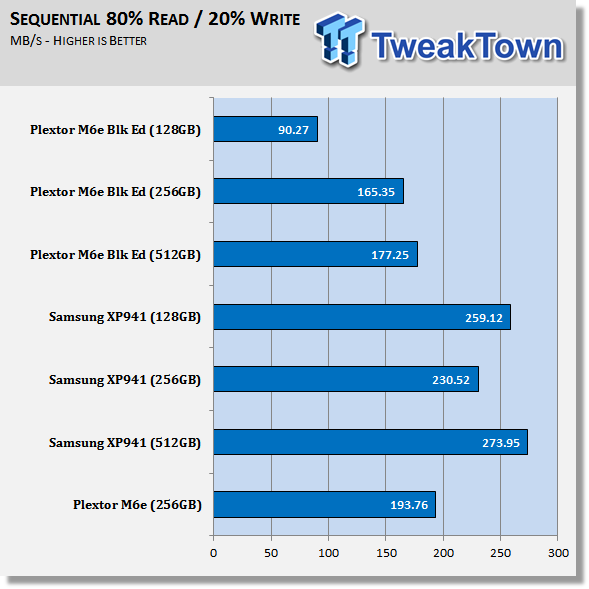
An Intel document states that consumer workloads are closer to 80% read and 20% write than any other mix. We use the same 80/20 mix to produce the data above. The Plextor M6e Black Edition 128GB scores the lowest in this mix, and by a relatively large margin.
Random Mixed Workload Response Time
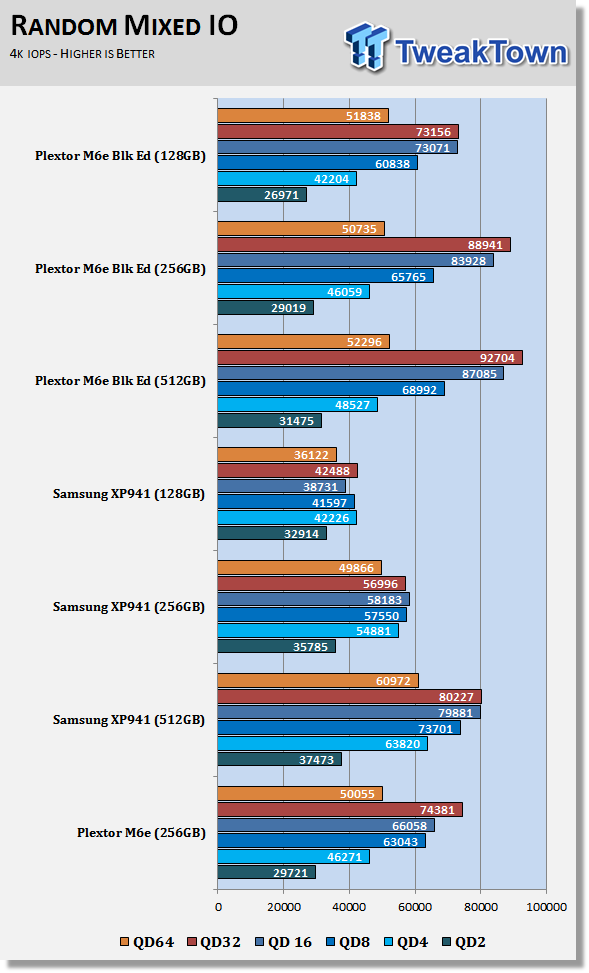
In this test, we measure random reads and writes paired together to create a random mixed workload. The Plextor drives do much better here with the drives in a normal consumer steady state.
PCMark 8 Consistency Test
Futuremark PCMark 8 Extended - Consistency Test
Version and / or Patch Used: 2.0.228
Heavy Usage Model:
Futuremark's PCMark 8 allows us to wear the test drive down to a reasonable consumer steady state, and then watch the drive recover on its own through garbage collection. To do that, the drive gets pushed down to steady state with random writes, and then idle time between a number of tests allows the drive to recover.
Precondition Phase:
1. Write to the drive sequentially through up to the reported capacity with random data.
2. Write the drive through a second time (to take care of overprovisioning).
Degradation Phase:
1. Run writes of random size between 8*512 and 2048*512 bytes on random offsets for ten minutes.
2. Run performance test (one pass only).
3. Repeat one and two, eight times, and on each pass, increase the duration of random writes by five minutes.
Steady state Phase:
1. Run writes of random size between 8*512 and 2048*512 bytes on random offsets for 50 minutes.
2. Run performance test (one pass only).
3. Repeat one and two, five times.
Recovery Phase:
1. Idle for five minutes.
2. Run performance test (one pass only).
3. Repeat one and two, five times.
PCMark 8's Consistency test provides a ton of data output that we use to judge a drive's performance. Here we see the three states of performance for the select SSDs, light use, consumer steady state, and worst case.
Storage Bandwidth - All Tests
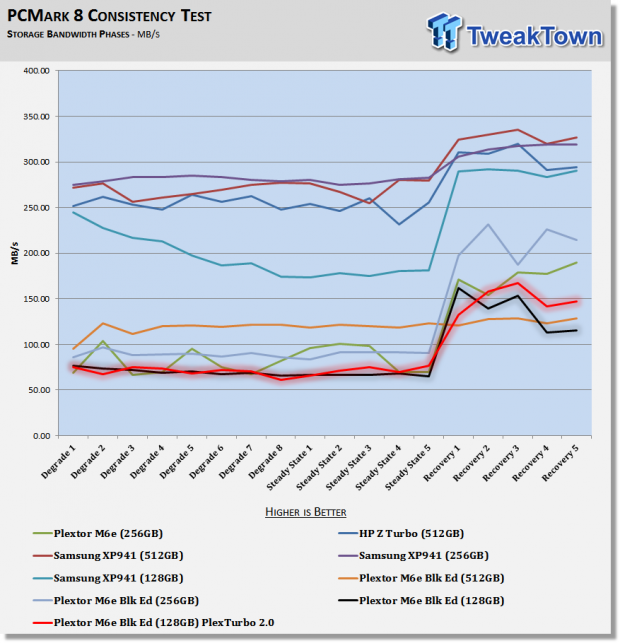
Here we get our first taste of PlexTurbo 2.0 in a system with 16GB of DRAM. When you have 16GB or more of system DRAM, Plextor's software will ration 4GB to make a DRAM cache for your SSD.
PlexTurbo is new; it just released this past August with the M6 Pro 2.5" SSD. It didn't take long for Plextor to reshape the software and give it the 2.0 name.
Storage Bandwidth - Heavy Load
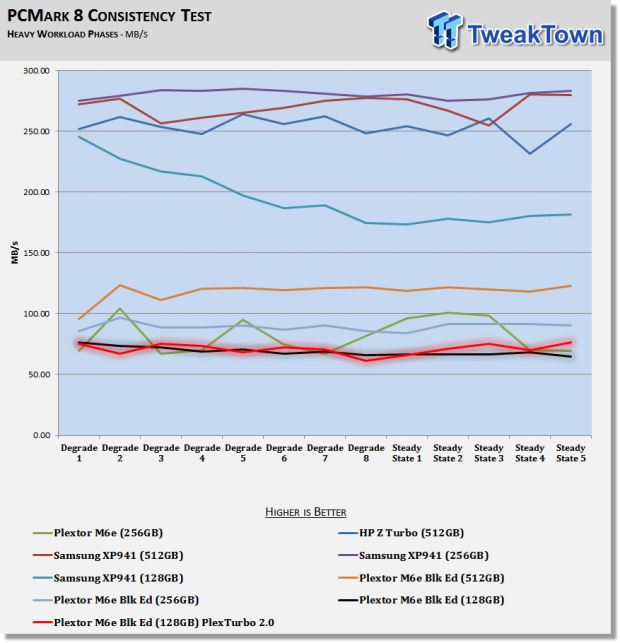
Under heavy load, PlexTurbo 2.0 doesn't give us much of a performance upgrade. In some places, we even measured a performance decrease. This isn't unheard of - Samsung's Magician software does the same thing under heavy workloads.
Storage Bandwidth - Typical Consumer Load
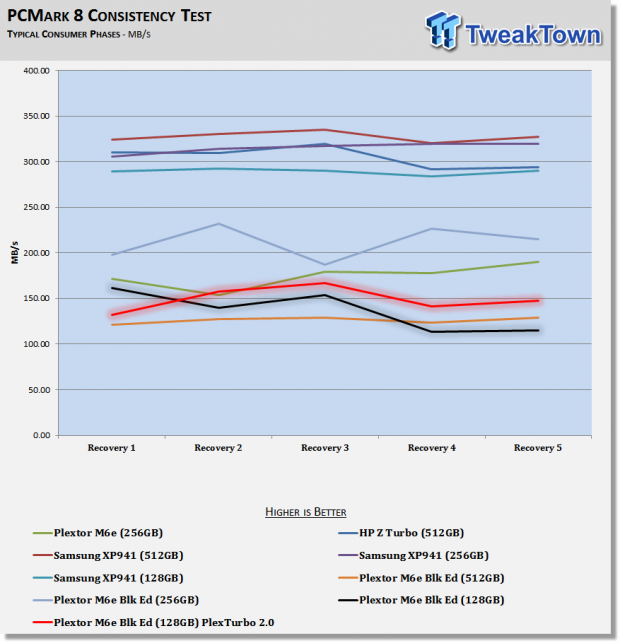
Both pieces of software are designed for consumer workloads, so using the software with the drive in steady state doesn't increase throughput performance. In the consumer tests shown here, the software does provide a small improvement in throughput performance.
PCMark 8 Consistency Test - Continued
Total Access Time - All Tests
The access time test measures the total latency across all 18 tests. This is one of, if not the most important of all tests we run at this time for consumer SSDs. When your latency is low, your computer feels fast; it's just that simple.
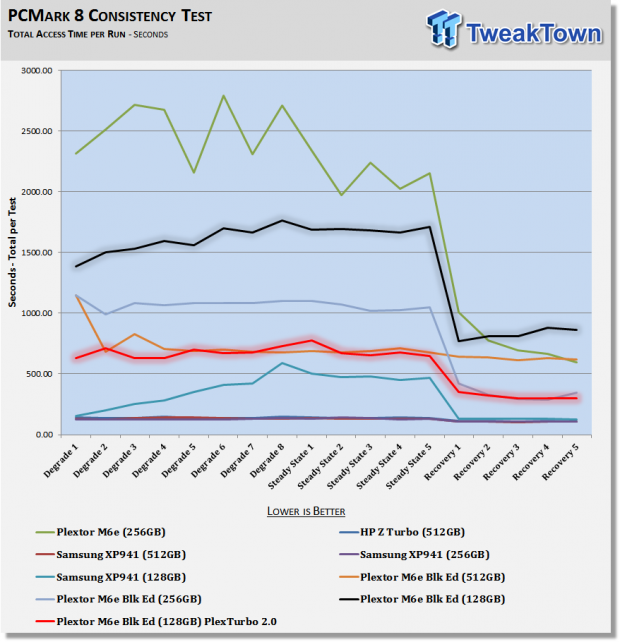
Users will actually feel a difference in latency with PlexTurbo 2.0.
Total Access Time - Heavy Load
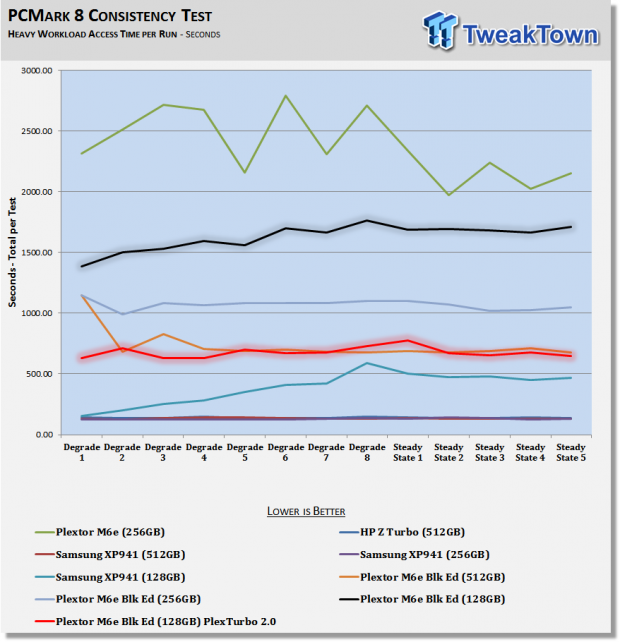
Even under heavy workloads, the latency decreases significantly as the DRAM collects the random writes and sends them to the drive as sequential data. This reduces wear on the flash, and also decreases the latency.
Total Access Time - Typical Consumer Load
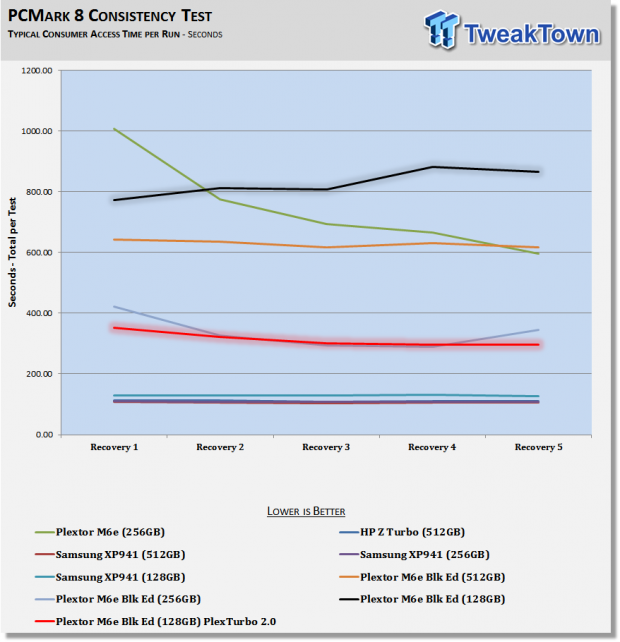
In the consumer test, we see that latency dropped by more than half. The only bad part about the data we see from PlexTurbo 2.0 under these conditions is that even with the software, the M6e Black Edition 128GB can't deliver the low latency offered by the XP941.
Final Thoughts

Unlike the previous M6e Black Edition reviews, we now have pricing information from Newegg on these products. The 128GB model we tested today lists at $199.99 at the time of writing. Newegg shows the Black Edition products available for preorder, but the drives will not ship until February 12, 2015. The 256GB model will sell for $299.99, and the largest capacity model, the 512GB, will sell for $529.99.
I think Plextor missed the market again when it comes to price, not unlike nearly every product the company has released since the M3 Pro. SSD prices have dropped over the years, but for some reason, Plextor keeps launching products at or above $1 per GB, even when competing products offer better performance at lower prices. Even though there are only two native PCIe SSDs on the market right now (barring All-in-One RAID products), the XP941 with superior performance has to be the starting point for cost. Then, price reductions should be made for the amount of performance under the XP941 that the M6e Black Edition offers.
We don't want to overlook the new Black Edition and the improvements this product brings. The XP941 doesn't include an adapter or a snazzy heat sink that rocks the aesthetics department. We do have to question if it's necessary though. Most people shelling out nearly $1 per GB on storage most likely have a system with a M.2 slot on the motherboard. That also means a Z97 or X99 chipset, although some M.2 slots are present on Z87 boards. In our testing, we've found that the best slot for full PCIe performance comes from the M.2 slot that is often connected straight to the CPU's PCIe lanes, and not through the PCH (South Bridge) or PLX switches. PCIe slots on many motherboards are almost always routed through one or the other. These switches and chipsets increase latency, and reduce throughput in many cases.
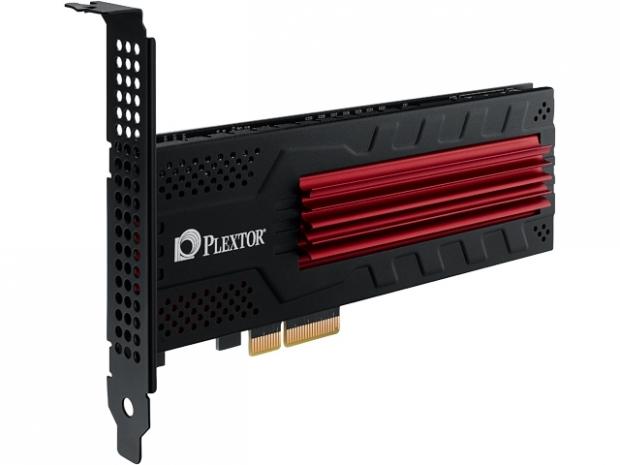
The next part to consider when choosing a native PCIe product is the need for a heat sink at all. When we tested the XP941, we found that the controller can get past 100 C, but the workload ran to get there was obscene, and well outside of typical consumer use. Most users will never touch 100% 4K random writes for ten minutes. The Marvell 88SS9183 controller doesn't get anywhere near those temperatures under the same workload, but that doesn't mean heat isn't a problem. With good case airflow (nothing too elaborate, but well ventilated), the 88SS9183 controller will work well inside of a computer without a heat sink.
Plextor did go the extra mile and included a nice heat sink to the drive, but the heat sink doesn't actually touch the controller at all. In fact, the heat sink will block air from passing over the hottest component, the Marvell controller. The heat sink does contact the DRAM and NAND packages on the opposite side of the controller, and those are two components that you do not want running at high temperatures.
We tested the 128GB M6e Black Edition today, and have reservations about gamers even considering running a 128GB drive. The game files are too large with modern games. If you play Falcon 4.0, or still install games from 700MB CDs, then 128GB is more than enough to satisfy your game collection. However, if you install Battlefield 4, or have a Steam collection, then you will run out of space faster than it took UPS to deliver your new 128GB SSD.

